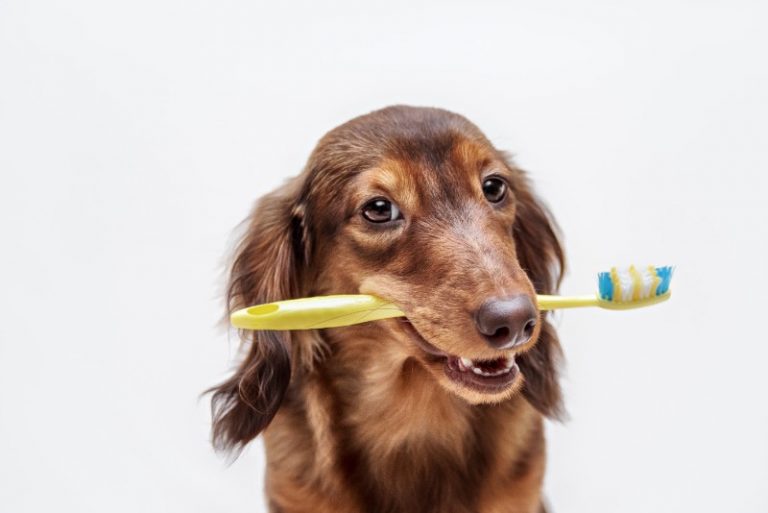 Dogs have over 40 adult teeth by the time they reach their first birthday, and cats have 30 permanent teeth by six months of age. These chompers are among their greatest assets. Not only helpful in self-defense, but your pet’s teeth also help them get the sustenance they need for healthy growth and development.
Dogs have over 40 adult teeth by the time they reach their first birthday, and cats have 30 permanent teeth by six months of age. These chompers are among their greatest assets. Not only helpful in self-defense, but your pet’s teeth also help them get the sustenance they need for healthy growth and development.
Unfortunately, 8 out of 10 pets suffer from at least some form of dental disease, so preventing and recognizing the signs of periodontal disease in pets should be a high priority for every pet owner.
As Easy as 1, 2, 3!
The approach to preventing periodontal disease in pets is three-fold:
- Annual examinations
- Regular attention to at-home dental care
- Regular appointments for professional cleanings
Without these opportunities, pets face serious risks to their health and happiness.
The Scope
Periodontal disease in pets is a progressive bacterial infection of the gums and surrounding supportive tissue. When plaque and tartar build-up on the teeth (as well as above and below the gum line), bacteria can irritate the gum tissue, leading to pain and bone loss. Teeth are eventually eaten away by bacteria until they fall out.
This can be a very painful process that often includes abscess, cavities, and broken teeth. What’s worse, an oral infection can actually spread bacteria throughout the body, damaging internal organs.
Stages of Periodontal Disease in Pets
If your pet is diagnosed with periodontal disease, treatment is based on the following stages:
- Stage 1 – Gingivitis, or gum inflammation, is typically present as a result of tartar and plaque accumulation. Swollen or reddish gums may be visible.
- Stage 2 – Also known as periodontitis, this stage is characterized by less than 25% bone loss (as seen on x-rays). Bad breath is a tell-tale sign. A professional cleaning conducted under anesthesia will stop the spread of the disease.
- Stage 3 – When 25-50% bone loss is apparent, the gums will likely bleed easily. Deteriorating gum attachment to the teeth is obvious, and these pockets will foster oral bacteria. Teeth may be extracted, and pain medication may be needed.
- Stage 4 – With more than half of bone structure gone, this stage of periodontal disease is very painful. Tooth loss and systemic infection are direct results.
The Good News
Preventing periodontal disease in pets is actually less expensive than treating problems associated with poor dental health. With this in mind, it’s time to get brushing!
We’re happy to help you get a handle on pet dental care. The first step is scheduling a routine wellness exam. We can look inside your pet’s mouth, address overall health, and discuss the possible need for veterinary dentistry while under anesthesia. Digital radiographs can also give us great insight into what’s happening beneath your pet’s gum line.
Our team at The Maywood Veterinary Clinic is always here for you and your pet. Please don’t hesitate to give us a call at (201) 800-6039!

